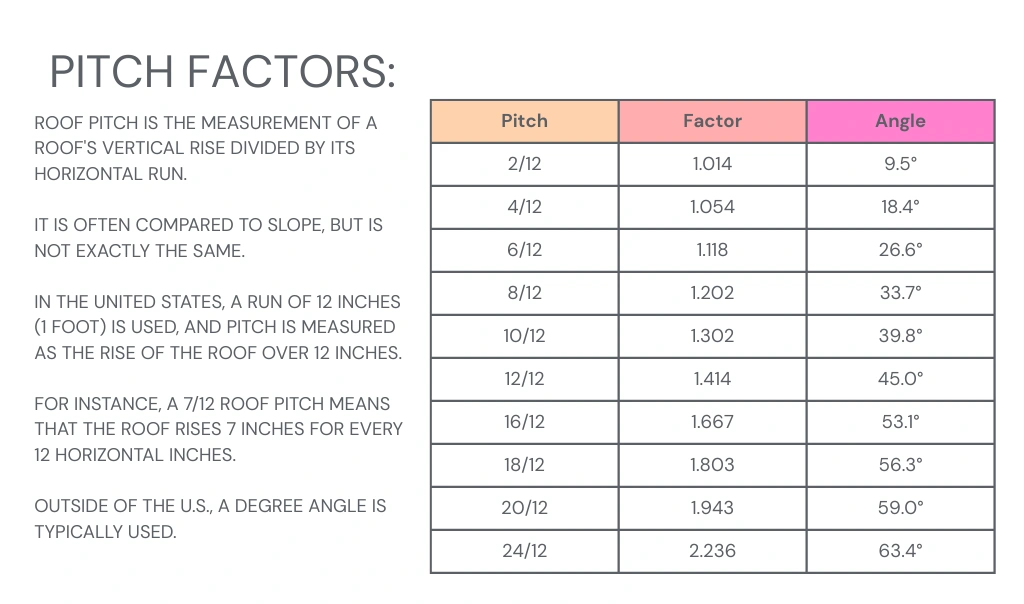Roofing Calculator

Tell us more, and we'll get back to you.
Contact Us
Tell us more, and we'll get back to you.
Contact UsEmbed on Your Website
Add this calculator to your website
Roofing calculations have evolved from simple geometric principles used by ancient builders to today's precise measurements that account for various pitch factors and material specifications. This systematic approach to roofing measurement, developed through centuries of architectural practice, ensures accurate material estimation and efficient installation processes.
| Pitch | Factor | Angle |
|---|---|---|
| 2/12 | 1.014 | 9.5° |
| 4/12 | 1.054 | 18.4° |
| 6/12 | 1.118 | 26.6° |
| 8/12 | 1.202 | 33.7° |
| 10/12 | 1.302 | 39.8° |
| 12/12 | 1.414 | 45.0° |
| 16/12 | 1.667 | 53.1° |
| 18/12 | 1.803 | 56.3° |
| 20/12 | 1.943 | 59.0° |
| 24/12 | 2.236 | 63.4° |

To calculate your roof area accurately, measure the length and width of each roof plane and multiply by the pitch factor (found in a pitch table). For a gable roof, multiply the result by 2. Consider valleys, dormers, and other features that might add to the total area. Always add 10-15% for waste and irregularities.
For hot climates, consider reflective materials like metal roofing or light-colored shingles. In cold regions, asphalt shingles with proper insulation work well. High wind areas benefit from metal or high-grade architectural shingles. Rainy climates need materials with good water resistance like slate or certain composites.
Building codes typically require 1 square foot of ventilation for every 150 square feet of attic floor space if you have a vapor barrier, or 1:300 without one. Proper ventilation should be balanced between ridge/roof vents and soffit vents. This helps prevent moisture buildup and extends roof life.
Underlayment provides a secondary water barrier and protects the roof deck. Synthetic underlayment offers better durability and water resistance than traditional felt paper. Rubberized underlayment is recommended for ice dam prone areas and valleys. The choice depends on climate, roof pitch, and primary roofing material.